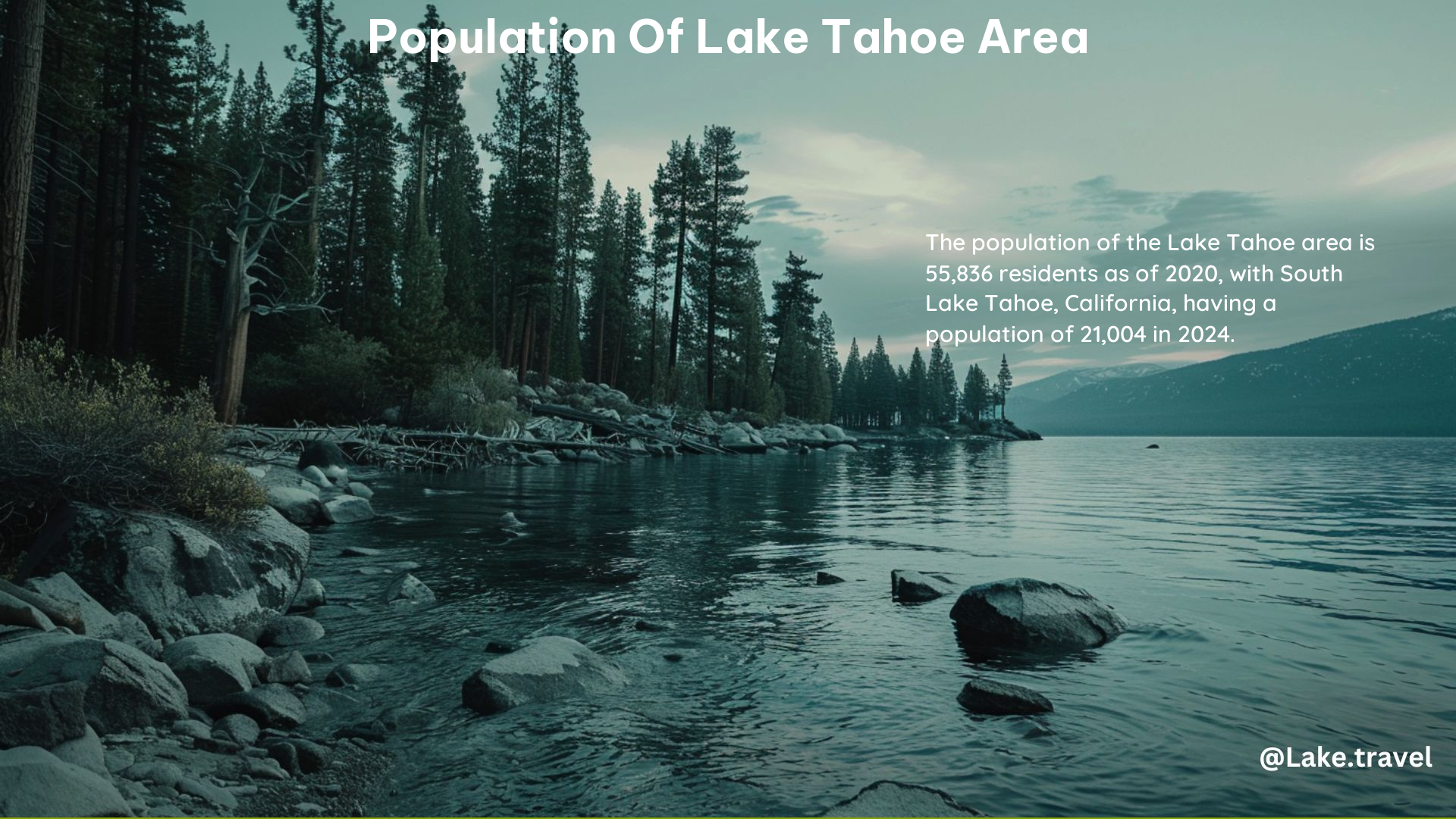The population of the Lake Tahoe area is a crucial factor for tourists and residents alike, as it directly impacts the overall experience and infrastructure of the region. In this comprehensive guide, we’ll delve into the key details surrounding the population of the Lake Tahoe area, providing you with a clear understanding of the demographics and trends.
The Exact Population of South Lake Tahoe
The population of South Lake Tahoe, California, is approximately 21,175 as of 2022. This figure represents a slight decline from previous years, with a projected population of 21,004 by 2024, indicating a -0.36% annual growth rate.
Year-Round Resident Population of Lake Tahoe

The Lake Tahoe regional population, including both the California and Nevada sides of the lake, is 55,836 residents as of 2020. This figure represents the permanent, year-round population of the area, excluding the influx of visitors during peak seasons.
Total Population on Peak Days
During the peak days, the total population of Lake Tahoe can reach up to 300,000 people. This includes both the permanent residents and the influx of visitors, who are drawn to the area for its stunning natural beauty, outdoor recreation, and vibrant tourist attractions.
Permanent, Year-Round Population of South Lake Tahoe
The permanent, year-round population of South Lake Tahoe, including the Stateline area, is approximately 21,330 as of the 2020 census. This figure represents the core of the local community, who call the area home throughout the year.
Typical Number of Visitors
Lake Tahoe attracts thousands of visitors each year, particularly during the winter sports season. The influx of tourists is a significant contributor to the overall population dynamics of the region, as it can significantly increase the total number of people present at any given time.
Accommodation Capacity
To cater to the large number of visitors, Lake Tahoe has a substantial accommodation capacity, with various resorts, hotels, and other tourist facilities. This infrastructure allows the area to accommodate a significant population surge during peak seasons, ensuring that visitors can enjoy their stay comfortably.
Demographic Trends
The population of the Lake Tahoe area is characterized by several demographic trends:
Age Distribution
The median age in South Lake Tahoe is 38.9 years, indicating a relatively balanced age distribution within the permanent population.
Household Income
The median household income in South Lake Tahoe is $67,686, which is slightly lower than the national average but still reflective of a stable economic base.
Population Growth
As mentioned earlier, the population of South Lake Tahoe is currently declining at a rate of -0.36% annually, with a projected population of 21,004 by 2024. This trend may be influenced by various factors, such as housing costs, economic opportunities, and environmental considerations.
Conclusion
The population of the Lake Tahoe area is a complex and dynamic aspect that directly impacts the overall experience of both residents and visitors. By understanding the key details surrounding the population, including the permanent year-round residents, the influx of visitors during peak seasons, and the accommodation capacity, you can better plan your visit and appreciate the unique characteristics of this stunning natural wonder.
